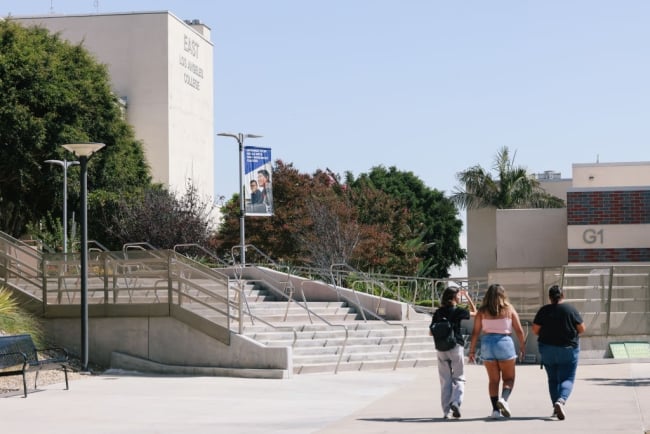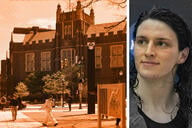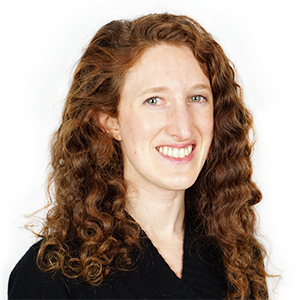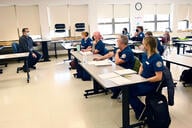You have /5 articles left.
Sign up for a free account or log in.

East Los Angeles College still offers the majority of its courses online.
Danie Maxwell/Los Angeles Times/Getty Images
East Los Angeles College, the most populous campus in the California Community College system, offered 60 percent of its courses in a hybrid or online format this past spring, most of them asynchronous. Prior to the COVID-19 pandemic, fewer than a quarter of courses were offered online.
Miguel Duenas, vice president of student services at East Los Angeles, expects the breakdown of online versus in-person classes to be similar for the fall semester because many students juggling work and family responsibilities prefer hybrid or fully online courses. He said students have made their preferences clear via their enrollment trends—online course sections at the college have filled much more quickly lately than in-person courses.
“That’s something we’ve observed for the past couple semesters … It gives them the flexibility to manage their lives and a lot of the needs that they have,” Duenas said.
Although the shift to remote learning was precipitated by the pandemic, many community colleges, which disproportionately serve older adults and working people, are continuing to offer at least half of their courses online in response to growing student demand for more flexible options. Some colleges administrators are even proactively expanding and improving their online offerings or making their current offerings more accessible.
Data from the California Community College system over all show significant student interest in online courses, even as colleges sought to transition back to in-person learning. A 2021 system survey of 400 prospective students found that more than half of respondents favored hybrid courses, 27 percent wanted all-online instruction and 18 percent preferred in-person classes, according to a report from the system chancellor’s office. The same report details a survey of California community college districts that found that about half planned to offer 50 to 85 percent of course sections in person in spring 2022, while another 32 percent of districts planned to offer between 10 percent and 49 percent of their course sections in person.
“Many districts found that overall, students show a higher demand for online courses,” the report read. “In looking at the community college districts’ mix of in-person and online courses and plans for future instruction, the survey results show a large variance across the system in efforts to meet local student need and community conditions. Some districts are quickly transitioning back to in-person instruction, while other districts are finding that there is greater demand for online instruction.”
Community colleges in other states have also seen continued demand for online learning. At Northern Virginia Community College, which has offered distance learning for 42 years, the number of students taking online courses recently surged. Between summer 2021 and 2022, online enrollment increased by more than 10 percent. Out of the 44,885 students enrolled at the college in spring 2023, 12,919 were enrolled online—more than a quarter of the student population.
Cynthia Pascal, associate vice president of e-learning at NOVA, said it’s not that students weren’t excited by the idea of returning to campuses.
“Our students tend to be Pell eligible, very close to the poverty line, tend to be working one or two jobs, tend to have children,” she said. “So, you have this excitement and wanting to see your friends, wanting to engage with instructors, wanting to engage with a school community, but then you have these responsibilities. And at the end of the day, you have to pick up your kid from soccer.”
Demand for online courses was so high this summer that the college added six more online courses just a few days before the last summer session began, Pascal said.
She noted that four-year institutions seem to be experiencing different trends.
“The four-year institutions are really seeing a return to traditional college where the students are being encouraged to go back to classes,” she said. “They’re limiting online offerings, intentionally forcing students back into the space.”
The Colorado Community College system also saw online enrollment increase more than in-person enrollment. Compared to this time last year, online enrollment for the fall term is up by 8 to 10 percent, while in-person enrollment is up 5 or 6 percent across the system.
Landon Pirius, the system’s vice chancellor for academic and student affairs, said colleges are starting to market their all-online programs better now that they’re so clearly in demand.
“Now we’re starting to really tell students, ‘You can do this all online if you want,’” he said.
The system is also currently rolling out Colorado Online, a platform that will allow community college students across the state to take online courses at different institutions in the system.
Pirius said it offers more flexibility to students and prevents the system from offering underenrolled classes on various campuses by combining some of them into online classes.
“We realized, especially during the pandemic, that we can’t continue to offer courses that are low enrolled and expect to be able to pay our bills,” he said. “But if you take four students from one college and four students from another and four students from another, now you’ve got 25 students in a class … It’s financially sustainable.”
A Shifting Landscape
Nikki Edgecombe, senior researcher at the Community College Research Center at Teachers College of Columbia University, said as far as she knows, there isn’t any current national data on what share of community college courses remain online. But she hears anecdotally that some campuses are still offering roughly half of their classes remotely, and students seem to be returning to some kinds of classes in person at higher rates than others. Courses considered “harder,” such as mathematics and physics, appear to be drawing more in-person students back to campuses compared to general education requirements, which students seem more confident to take online.
“I think we’re trying to sort out what that looks like post-pandemic, and my sense is things are still shaking out,” she said.
Edgecombe said some community college leaders worry that while online options are more convenient for many students, academic outcomes from online courses tend to be weaker than on-campus courses. As result, the leaders may want to bring more students back to campuses in the future. Multiple studies have shown that community college students perform better academically in a nonremote environment and are more likely to persist, though she believes the pandemic spurred community colleges to improve online teaching and learning techniques.
“We’re still trying to determine, exactly, is that trade-off necessarily worth it,” she said. “We want students to be successful in these courses and enroll in the modality that really supports their success.”
She said some college leaders are also concerned about underutilized campuses.
“Institutions have large campuses with buildings full of classrooms, and they’re aware of the need to really leverage that classroom space,” she said. “Those are fixed costs.”
Maintaining mostly online courses can also require the use of additional resources by colleges.
Pascal noted that high demand for online courses requires not only more faculty members, but more instructors willing to teach on short notice, as online courses are being added at the last minute to meet student needs.
Kevin Jimenez, public information officer at East Los Angeles College, said the college continues to offer free Wi-Fi hotspots to students after learning of the need early in the pandemic. The need has not waned as many students continue to take online classes.
“Our student population primarily comes from a socioeconomic background that’s a little less advantageous as most people in America,” he said. “There was a big gap in terms of technology access. Some students didn’t have any internet in their house.”
As more courses are offered online, community college students are also no longer place-bound or limited to taking courses at the campus closest to where they live. This has created a more competitive dynamic for community colleges, he said.
“Before, you had a lot of these local high schools where kids felt like, ‘OK, if I want to go to community college, I kind of have to go to my local school, because I can’t really fully take a class online that’s across the city from me,’” he said. “Now … they never have to even step foot on the campus. So, it’s really worked where students have the power now to choose their own education, even on the community college level, kind of like they do with the four-year.”
Jimenez has met students who are taking classes at up to three different community colleges in the nine-campus district based on what courses best fit their schedules or were still open.
“It’s made us all kind of think and look at things differently,” he said. “I don’t really ever see us going back unless the needs of our students reflect that,” he said.





